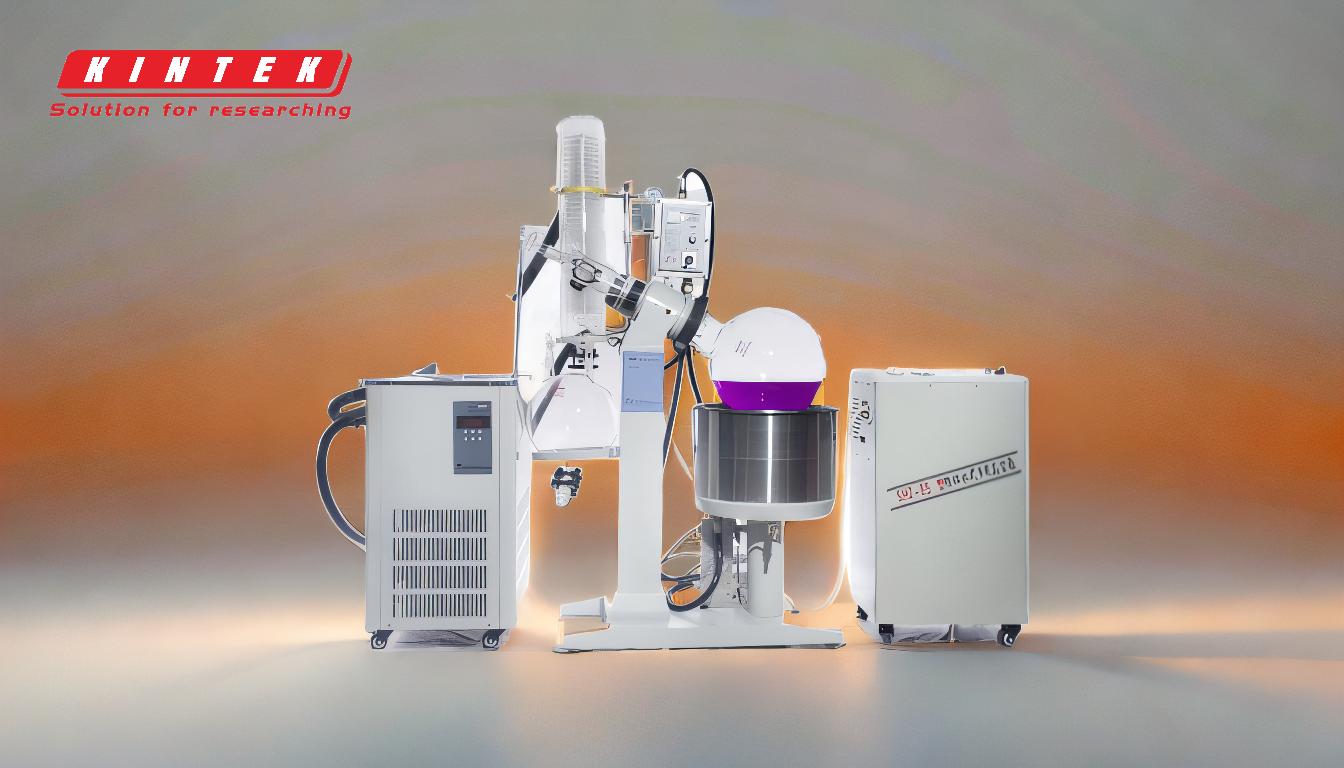The water bath in a rotary evaporator plays a critical role in the evaporation process by providing controlled heat to the rotating flask. It ensures that the solvent evaporates efficiently without causing the sample to burn or freeze. The water bath maintains the temperature of the solution, replacing the heat lost during evaporation and preventing the process from stopping. Additionally, it prevents the solvent from freezing during evaporation, which is particularly important for volatile solvents. The temperature of the water bath must be carefully controlled to avoid exceeding the solvent's boiling point, ensuring safe and effective operation.
Key Points Explained:

-
Heat Provision for Solvent Evaporation
- The water bath supplies the necessary heat to the rotating flask, enabling the solvent to evaporate at a controlled rate.
- This heat compensates for the energy lost during evaporation, ensuring the process continues smoothly.
- Without the water bath, the evaporation process would slow down or stop due to insufficient heat.
-
Prevention of Sample Burning or Combustion
- By maintaining a consistent temperature, the water bath prevents the sample from overheating, which could lead to burning or combustion.
- This is especially important for heat-sensitive samples that could degrade or react at high temperatures.
-
Prevention of Solvent Freezing
- During evaporation, the solution can lose heat rapidly, causing the solvent to freeze.
- The water bath ensures the solution remains at a stable temperature, preventing freezing and maintaining the efficiency of the evaporation process.
-
Temperature Control and Safety
- The water bath allows precise control of the temperature, ensuring it does not exceed the boiling point of the solvent.
- This prevents overheating, which could damage the sample or the equipment.
- For small volumes of basic solvents, heating the water bath may not be necessary, as the evaporation process can occur at room temperature.
-
Compatibility with Solvents
- It is essential to choose a water bath with a temperature range compatible with the solvent's boiling point.
- Using a water bath with a higher temperature capacity than required can lead to safety risks and inefficient evaporation.
-
Operational Efficiency
- The water bath enhances the overall efficiency of the rotary evaporator by providing consistent heat.
- This ensures faster evaporation times and better separation of solvents from the sample.
-
Versatility in Use
- The water bath can be filled with water or oil, depending on the temperature requirements of the process.
- Oil baths are used for higher-temperature applications, while water baths are suitable for lower-temperature processes.
By understanding these key points, users can optimize the use of a water bath in a rotary evaporator, ensuring safe, efficient, and effective evaporation of solvents.
Summary Table:
| Key Function | Description |
|---|---|
| Heat Provision | Supplies controlled heat to enable efficient solvent evaporation. |
| Prevents Sample Burning | Maintains consistent temperature to avoid overheating and sample degradation. |
| Prevents Solvent Freezing | Ensures stable temperature to prevent freezing during evaporation. |
| Temperature Control | Prevents exceeding solvent boiling point for safe and effective operation. |
| Compatibility with Solvents | Ensures temperature range aligns with solvent boiling points. |
| Operational Efficiency | Provides consistent heat for faster evaporation and better solvent separation. |
| Versatility | Can use water or oil baths depending on temperature requirements. |
Optimize your rotary evaporator's performance—contact our experts today for tailored solutions!











